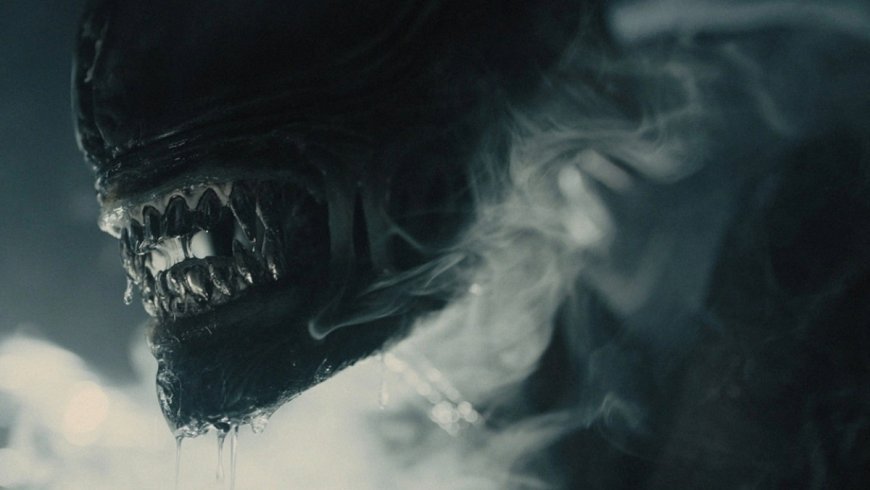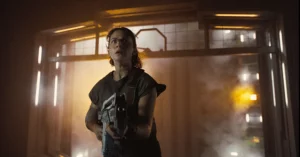Alien: The Romulus Chronicles

Even as the Alien franchise has more-or-less blended with damn-near every other cinematic iteration of regurgitated IP in my mind, it’s a welcomed thought to remember that very few installments in the series are awful. Since its return with the prequel, Prometheus, it has at least been a dependable franchise that continues to have a great deal of artistic merit.
Now, we have Alien: Romulus, spearheaded by a director whose name isn’t Ridley Scott. I was excited for Uruguayan filmmaker Fede Álvarez to be afforded the opportunity to grab this franchise by its claws. The man behind Evil Dead (2013) and Don’t Breathe, Álvarez’s penchant for body horror feels right at home in a series predicated on grotesque creatures and doomy atmosphere.

Set in 2142, 20 years after Alien, and over 35 years prior to Aliens, Romulus has the series going back to the basics, recalling Scott’s first film in tone and structure. Keeping with tradition of a female protagonist/anchor is Rain Carradine (Cailee Spaeny), a woman who gets the rugged pulled out from under her thinking she reached her quota of mining hours only to discover the quota has been upped yet again. Living on this hellscape of a planet known as Jackson is the equivalent of working in a mine, as it never sees even the faintest glimmer of sunshine.
In the midst of her own disbelief and frustration, she discovers a group of her acquaintances, a plethora of space colonists, are determined to raid a space station they’ve found floating above their own planet. Rain sticks closely by her synthetic “brother” Andy (David Jonsson), who cares for her in equal measure. Aboard the ship are Archie Renaux, Isabela Merced, Spike Fearn, and Aileen Wu, populating their vessel with a wide variety of accents that sometimes further demand theaters come equipped with standard subtitles. In time, the crew discovers and feel the wrath of Facehuggers shortly after landing aboard Romulus and Remus, two halves of a now-joined space station recessed deep in the cosmos.
It’s a breath of fresh air to see an Alien movie that lacks the headiness of its recent predecessors. Álvarez and his loyal co-writer Rodo Sayagues construct a bare-bones narrative, populate it with just enough characters with wide-ranging personalities, and trap them aboard a space vessel run amok by creatures whose name reveals their method of attack. Naaman Marshall’s production design is put on display early, with a visually stunning opening sequence that lets space and the complex machinery of the 2100s breathe in delightful detail.

Spaeny has had one star-making turn after another as of late. After playing Elvis’ wife in Priscilla, and a green photojournalist in Civil War, she turns in a vulnerable yet confident performance as a young woman whose perspective slowly shifts the longer she’s aboard the titular station. Holding every bit of his own is Jonsson, tasked with the most difficult role of everyone, playing a humanoid whose own moral compass proves shifty at various points. As was the case in Rye Lane, Jonsson’s eyes are his most distinctive characteristic, capable of conveying reactive emotion as well as robotic blankness depending on what the scene demands.
Don’t Breathe let us know that Álvarez brought something credible to the table when it came to devising a setup, but Alien: Romulus sees him graduate to truly impressive staging. The sequence that sees the Facehuggers turning loose is heightened of course because of the careful, glacial build-up, but is ultimately made satisfying as we see an army of them quickly scale the tight hallways of Romulus before launching onto their next victim. Cinematographer Galo Olivares dials up dark and ominous atmospheric touches, but for me, some of his best work is when Rain and Andy are on Jackson, a land illuminated only by dumpster fires and lighters. It’s a murky, smoky wasteland, one liable to depress the hell out of you, affirming Olivares’ craft.
One could reasonably accuse Romulus of not knowing when to cease with the Alien callbacks and blaze its own trail. This film has so much in common with its originator from a stylistic standpoint that some of the fan service elements feel misplaced; even tacked-on. In addition to its visuals, however, one of the best attributes Álvarez and Sayagues bring to the table is the narrative simplicity. You don’t feel like you need to be a scholar of the galaxies, or versed in the mythology of the xenomorphs in order to appreciate this picture.







